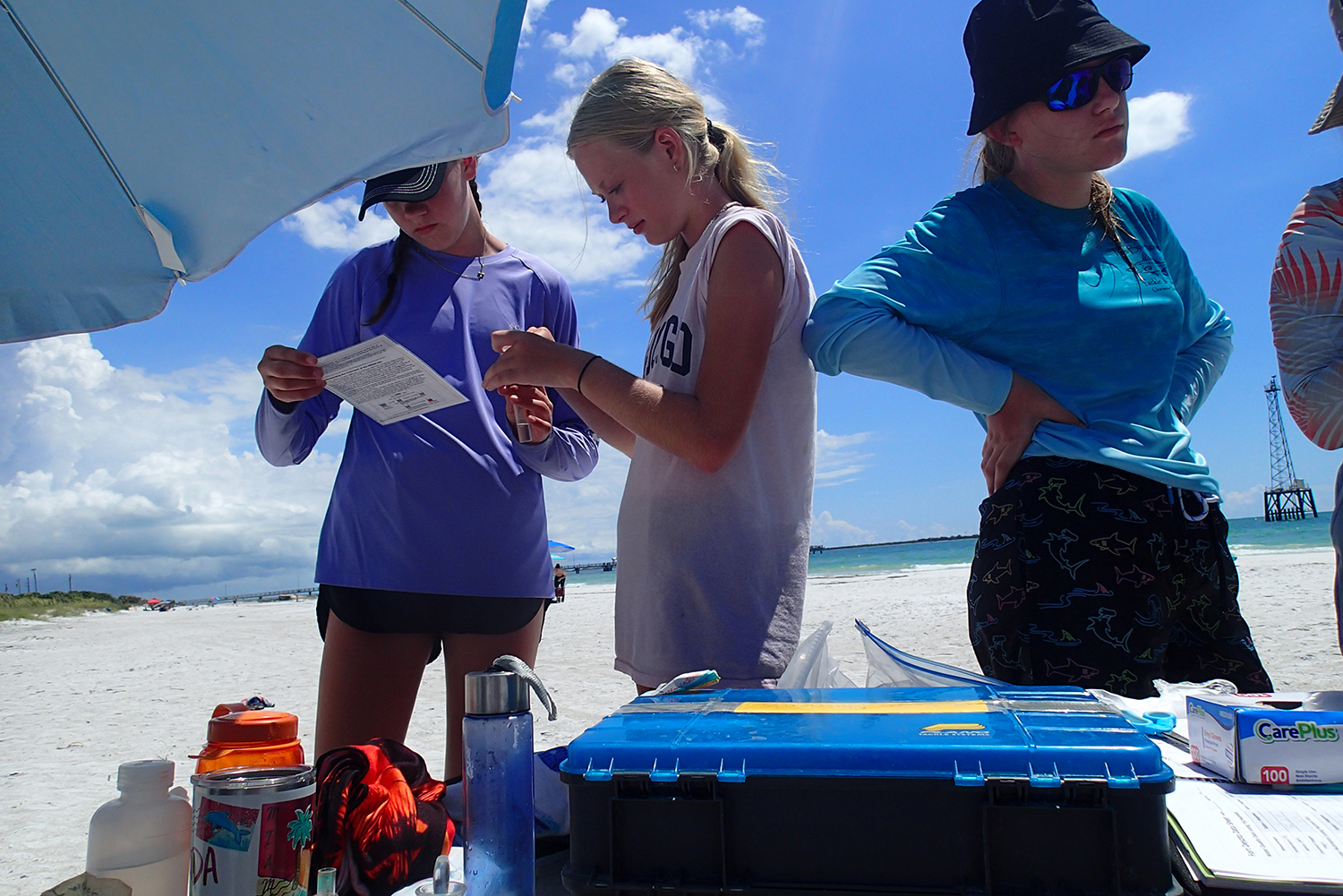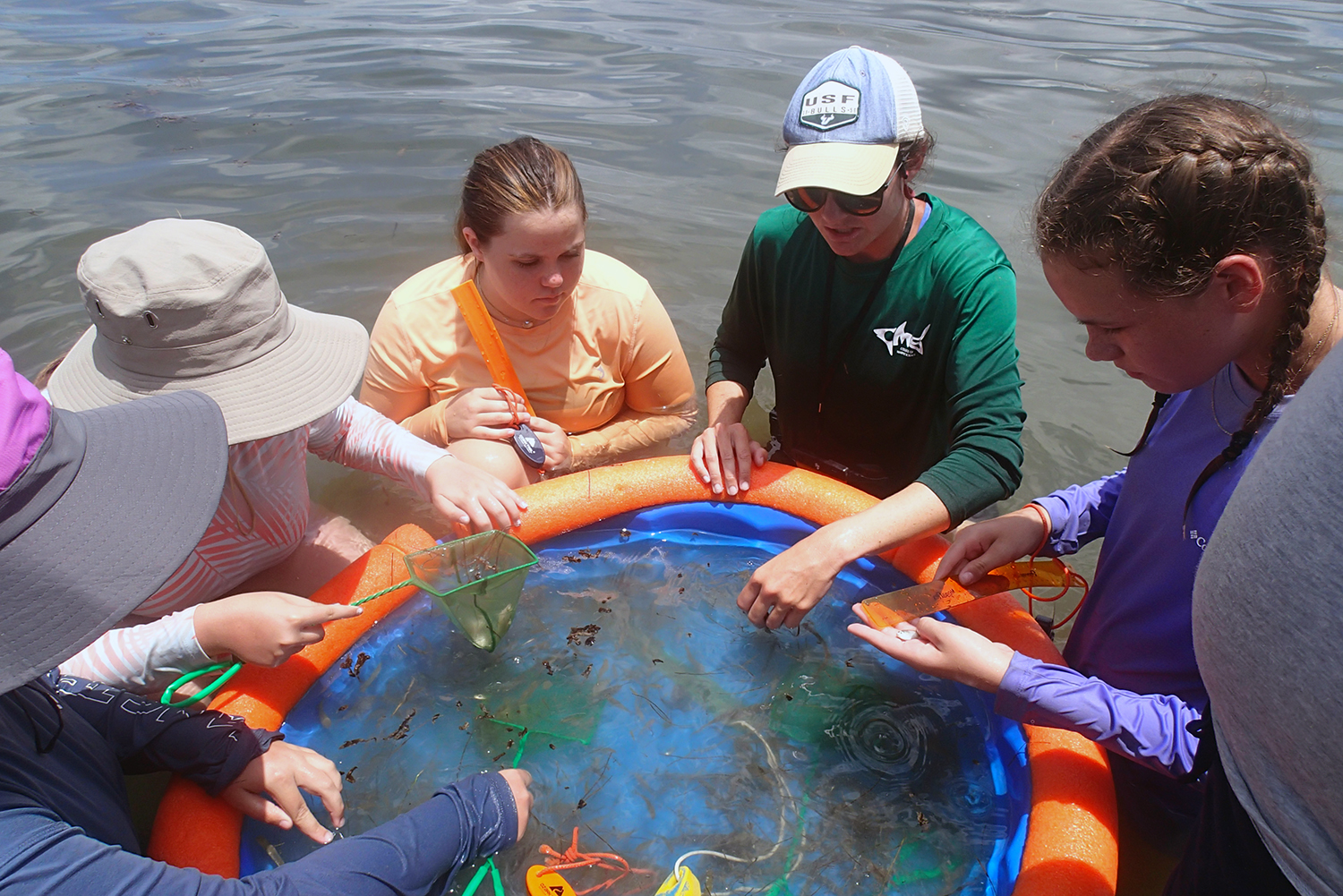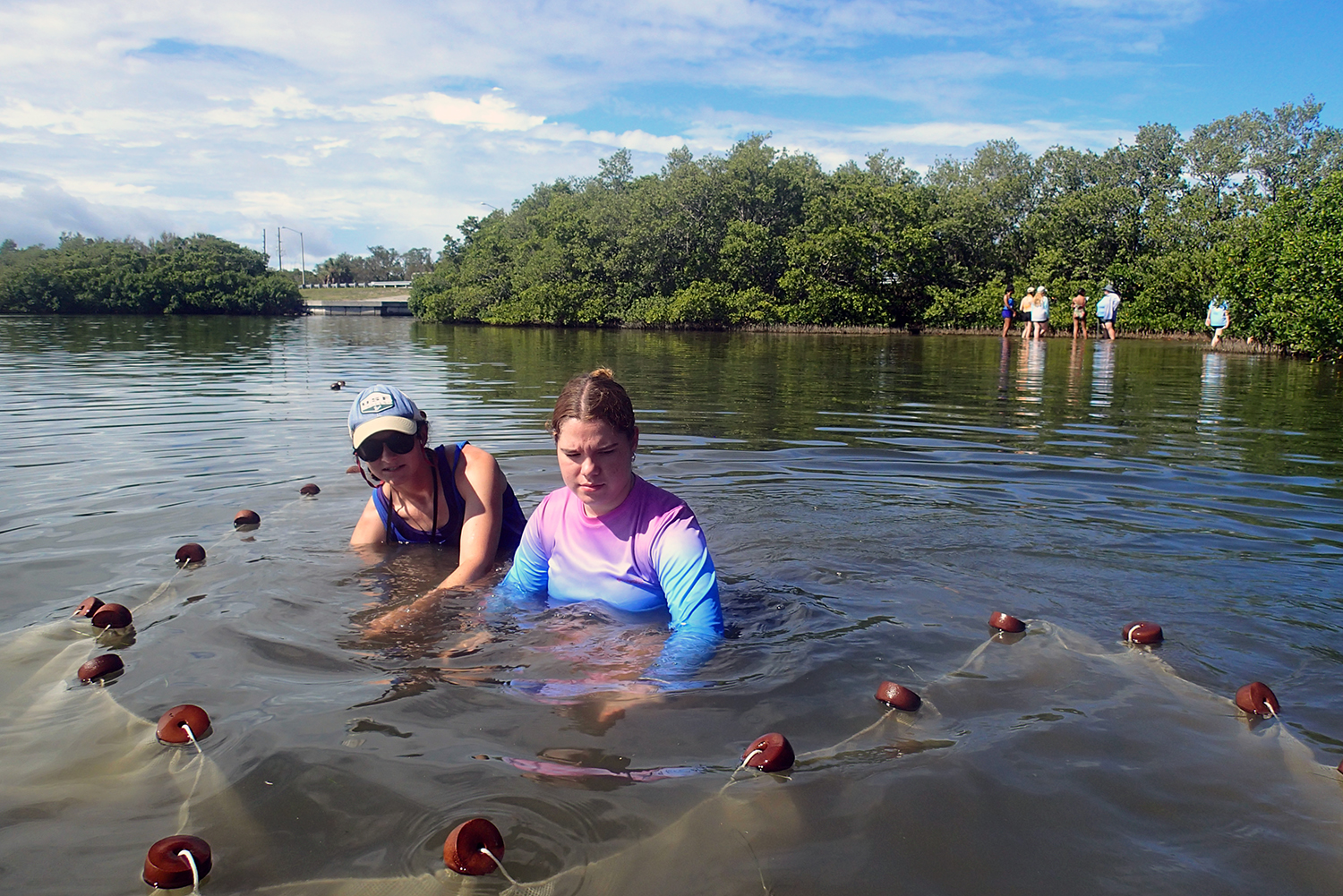Week 1 - Ft. De Soto Field Trips, June 12-14
Madison Schmitz, Peer
The field days at Fort De Soto were hot, humid, a little rainy, and busy to say the least. At each of our locations, the OCG campers became scientists as they entered the nutrients work stations. The girls donned their imaginary lab coats and got to work, forming teams to collect water samples and important information with the YSI. Despite the Florida sun, teams tested their water samples for different nutrients, notably dissolved oxygen (DO), alkalinity, and nitrates. With the leadership from their science mentor, the girls observed how every drop of sulfuric acid changed the color of their water sample in their alkalinity experiment. At each of the locations, the girls also compared their results. They put their heads together, figuring out why the mangrove station might have less DO than the seagrass station. The girls were also able to become meteorologists, using anemometers to measure the wind speed, determining cloud types, and cloud-to-sky percentages at each location.

Ella Mastry, Peer
During our first field day at Ft. De Soto, the OCG girls learned many things about the collection of different types of data and its relativity to a healthy and stable marine environment. Not only did they learn how to collect and perform tests on water samples, but the girls also observed diversity of fish species, and what you can infer from an ecosystem based on sediments and plants. We moved to three different locations throughout the trip, performing the same experiments each time, to show the girls how areas with different conditions can influence the biology and water conditions. Our first location was covered in mangroves and was on the bay side of the island, making for extremely calm conditions. The second location was mostly seagrass beds, and the third location was the beach on the north side of the island with the highest energy. This trip was amazing for the girls because it allowed them to become the scientists for the day and have an experience that is truly hands-on. I watched these young ladies step out of their comfort zone and try new things. They all showed their passion and interest in the subject no matter what station they were rotating through.

Haleigh Downes, Peer
At Fort De Soto there were three stations, where the campers rotated between collecting sediments, nutrients, and seine net samples. At the seine station, the campers used a seine net to catch fish at two of the three locations. The campers used rulers to measure the fish and counted how many of each species. This station showed the campers how different ecosystems have an impact on the size and behavior of fish.
